Matcha cupcakes have become one of my favorite ways to bring a unique twist to traditional desserts. The first time I tasted one, I was wandering through a quiet café in Kyoto, Japan, on a rainy afternoon. The earthy aroma of matcha mingling with warm vanilla frosting pulled me in—and I was hooked. That moment sparked my journey into baking with matcha, and I’ve been experimenting ever since.
In this guide, I’ll walk you through everything I’ve learned about crafting the perfect matcha cupcakes—from understanding the right grade of matcha to use, to adjusting sweetness for that delicate balance of flavor. Whether you’re new to baking or a seasoned pro curious about green tea desserts, this article is packed with tips, substitutions, personal stories, and answers to all your matcha baking questions.
Now let’s dive into the story behind why matcha cupcakes are stealing the spotlight.
Looking for inspiration? Try one of my favorite green tea dessert twists featured in our Nama Chocolate that truly complements matcha’s earthy flavor.
Table of Contents
The Rise of Matcha Cupcakes in Modern Baking
The Cultural Origins of Matcha and Its Use in Sweets
The story of matcha cupcakes begins long before trendy bakeries made them Instagram-famous. Matcha, a finely ground powder of specially grown green tea leaves, has been cherished in Japan for centuries. Originally used in tea ceremonies for meditation and mindfulness, matcha was deeply spiritual and cultural—far from the dessert aisle.
But food evolves. Over time, matcha transitioned from teacups to cookbooks, appearing in everything from noodles to mochi. I first saw matcha used in sweets while visiting an old wagashi shop in Osaka. The pastry chef was folding matcha into sponge cake, and that vivid green hue caught my eye instantly. That’s when I realized matcha’s culinary potential goes far beyond sipping.
As globalization brought Japanese ingredients to Western kitchens, matcha made its way into baking trends. It wasn’t long before creative bakers started experimenting with matcha cupcakes, blending tradition with modern dessert culture.
Why Matcha-Cupcakes Are Trending Globally
There’s something unmistakably charming about a cupcake that’s both beautiful and nutritious. That’s part of why matcha cupcakes are popping up everywhere—from hipster bakeries in Brooklyn to cozy cafés in Melbourne.
So, why the sudden global love affair with green tea cupcakes?
First off, matcha delivers a unique flavor profile—earthy, slightly bitter, and rich—complemented perfectly by sweet, creamy frostings. Second, it’s packed with antioxidants, making dessert feel a little less guilty (and a lot more Instagram-worthy). Lastly, the color. Let’s not lie, the natural vibrant green shade is a visual delight, especially when swirled with a snowy white frosting or dusted lightly with matcha powder.
I noticed this trend during a food tour in San Francisco, where almost every bakery had their own twist on matcha treats. Some added white chocolate chips, others paired it with yuzu, and a few even made it vegan-friendly. What all had in common was that earthy, calming taste and a look that screamed “photogenic.”
Matcha cupcakes aren’t just a trend—they’re becoming a staple for home bakers who want something a little different, a little healthier, and a lot more stylish.
Understanding Matcha – Flavor, Grades, and Impact on Recipes
What Makes Matcha Unique in Flavor and Color
If you’ve ever bitten into matcha cupcakes and paused to savor that earthy, creamy complexity, you’re not alone. Matcha isn’t just a fancy green powder—it’s a whole flavor experience. It brings a blend of grassy bitterness, subtle sweetness, and umami, which creates a beautiful depth when used in desserts.
Unlike regular green tea, matcha is made from shade-grown leaves that are de-stemmed and stone-ground. This gives it a vibrant green color and a much richer flavor. When baked into cupcakes, matcha transforms the basic vanilla sponge into something aromatic, balanced, and refined.
I’ve learned through trial and error that the intensity of matcha can vary depending on where it’s grown. Japanese matcha, especially from Uji or Nishio, tends to be sweeter and smoother—perfect for desserts. Chinese matcha, on the other hand, is often more bitter and better suited for savory recipes.
And let’s not forget color. The right matcha will turn your cupcakes a gorgeous jade green. But low-quality matcha? It can make them look murky and dull. That’s why your choice of matcha really matters.
Culinary vs Ceremonial Grade: What to Use in Cupcakes
So which grade of matcha is best for matcha cupcakes? Here’s a quick breakdown:
| Matcha Grade | Best Used For | Characteristics |
|---|---|---|
| Ceremonial | Drinking | Bright green, smooth, delicate flavor |
| Culinary | Baking & cooking | Slightly bitter, bold flavor, more affordable |
Ceremonial matcha is top-tier. It’s meant to be whisked with water and sipped slowly. While you can use it in cupcakes, it’s honestly not worth the cost—it’s pricey, and much of its subtlety gets lost in baking.
Culinary grade matcha, on the other hand, is made for heat. It’s more robust in flavor and holds up well in baked goods. Plus, it’s easier on your wallet. For my own matcha cupcakes, I always go with high-quality culinary grade—it gives me that signature matcha taste without overpowering the sweetness of the batter.
Here’s a tip I picked up during a baking class in LA: sift your matcha before mixing it into your batter. It helps prevent clumping and makes your cupcakes more evenly green.
Health Benefits and Nutritional Value of Matcha in Cupcakes
Antioxidants and L-Theanine: Health Highlights of Matcha
One of the things that drew me to making matcha cupcakes regularly wasn’t just the flavor—it was the idea that I could enjoy something sweet while still getting some nutritional value. Sounds like a win-win, right?
Matcha is loaded with catechins, particularly EGCG (epigallocatechin gallate), a type of antioxidant known for fighting free radicals and reducing inflammation. Just one teaspoon of matcha powder can contain as many antioxidants as 10 cups of regular green tea. That’s no small thing when you’re looking to turn dessert into something functional.
Another unique element? L-theanine, a rare amino acid almost exclusive to green tea. It promotes calm without drowsiness, and when paired with caffeine (which matcha also has), it gives you focused energy without the crash you often get from coffee. I’ve found this combo especially helpful during late-night baking sessions.
Here’s a quick look at what matcha brings to the table:
| Nutrient | Benefit |
|---|---|
| EGCG | Antioxidant, supports metabolism |
| L-theanine | Promotes calm focus |
| Chlorophyll | Detoxifying and alkalizing |
| Caffeine | Gentle energy boost |
So when you enjoy matcha cupcakes, you’re not just indulging—you’re adding nutrients to your treat. That’s the kind of dessert I can get behind.
How Baking Affects Matcha’s Nutritional Content
Of course, no ingredient is immune to heat—and yes, baking does affect some of matcha’s nutritional perks. But here’s what I’ve learned after making dozens of batches: while certain heat-sensitive antioxidants may degrade slightly during baking, many still remain intact, especially if you don’t overbake your cupcakes.
The key? Low to moderate baking temperatures. When I bake my matcha-cupcakes at around 325°F (instead of 350°F or higher), I preserve more of the good stuff. The cupcakes rise just fine, the texture stays soft, and I retain more of matcha’s signature green hue and nutrients.
Also, I always recommend storing cupcakes in an airtight container away from light—UV exposure can oxidize the matcha and dull the color and taste over time.
For a dessert that’s both indulgent and antioxidant-rich, don’t miss our Chocolate Tiramisu—a decadent treat with a touch of elegance.
Best Ingredients and Substitutes for Perfect Matcha Cupcakes
Flour, Sweeteners, and Dairy-Free Alternatives
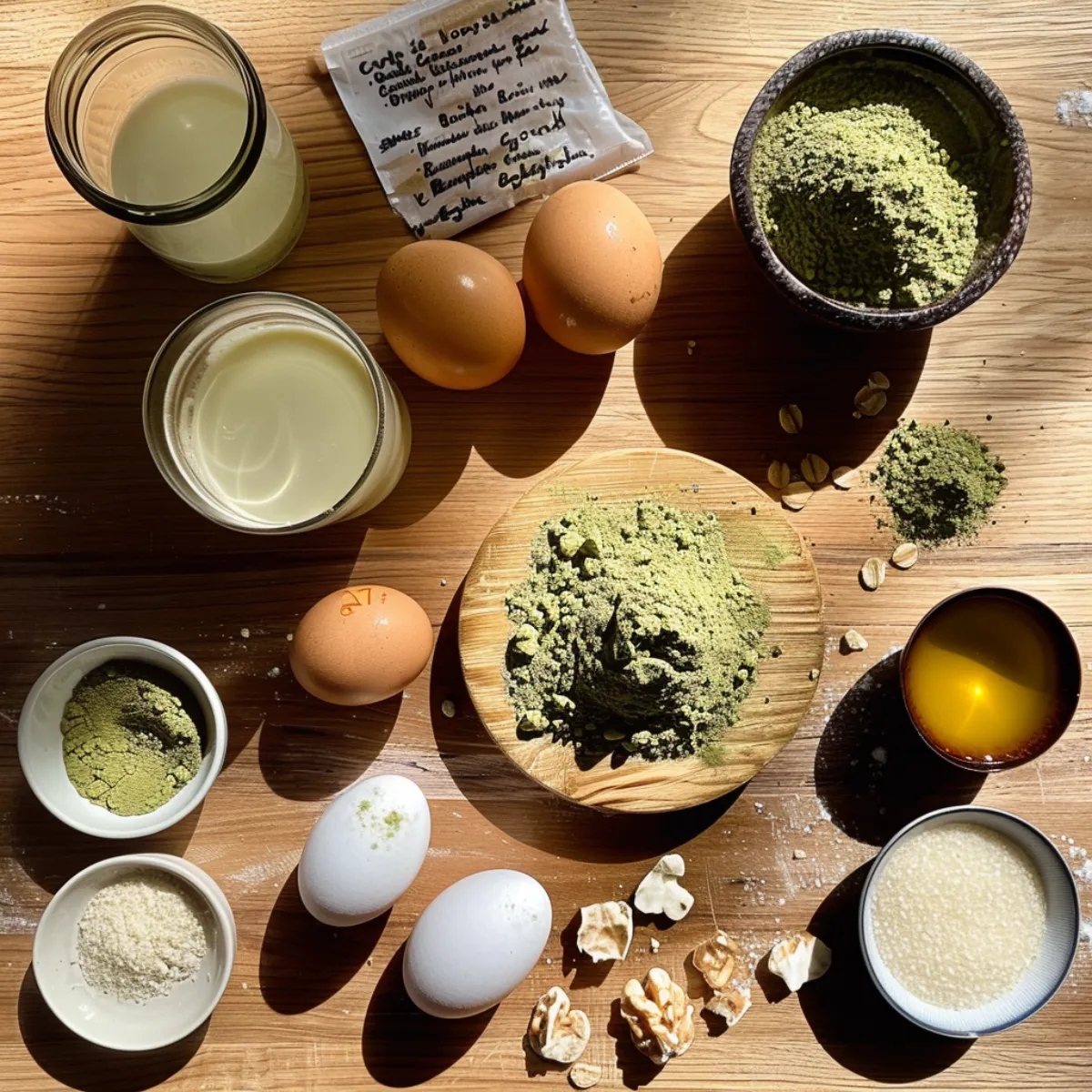
Crafting the perfect matcha cupcakes starts with nailing the base ingredients. While the matcha provides the flavor and color, what you pair with it makes or breaks the texture.
Flour Choices:
I typically use all-purpose flour for a soft, tender crumb. But for a more nutritious version, I’ve swapped in part whole wheat or almond flour with great results. Just be mindful—too much whole grain and you’ll dull the vibrant green and risk dryness.
Sweeteners:
White sugar works well to highlight matcha’s earthiness, but I often turn to alternatives like coconut sugar or maple syrup for a more caramel-like depth. For a low-glycemic option, monk fruit sweetener holds up beautifully in baking.
Dairy-Free Options:
If you’re skipping dairy, use oat milk or almond milk. I’ve baked with both and found oat milk gives a creamier texture that complements the matcha better. For butter alternatives, refined coconut oil or neutral vegetable oil does the trick without interfering with flavor.
| Ingredient Type | Standard | Substitution |
|---|---|---|
| Milk | Whole milk | Oat milk or almond milk |
| Butter | Unsalted butter | Refined coconut oil |
| Sugar | White sugar | Coconut sugar / Monk fruit |
| Flour | All-purpose | 50% almond + 50% AP flour |
If you’re aiming for a vegan-friendly cupcake, you can also swap out eggs using applesauce or a flaxseed “egg.” I’ve done this for friends with dietary restrictions, and the texture remains moist and light.
Alcohol-Free and Pork-Free Flavor Enhancers for a Clean Recipe
Now let’s talk flavoring—because not all vanilla extracts or frosting additives are created equal. Many store-bought options, especially those labeled “pure,” contain alcohol. While it burns off during baking, I prefer using alcohol-free vanilla extract in my matcha cupcakes for a cleaner and more inclusive recipe.
As for frosting or decorative toppings, some commercial products sneak in gelatin-based sprinkles or bacon-themed garnishes. I always steer clear of anything with pork or alcohol content, opting instead for:
- Homemade vanilla bean paste (alcohol-free)
- Coconut cream-based frosting
- Natural fruit zest or dried flower petals for toppings
- Vegan white chocolate shavings
I once accidentally bought frosting made with brandy flavoring—not cool. Since then, I always double-check labels and even started making my own toppings from scratch. That way, I know exactly what’s going into each batch.
Foolproof Recipe – How I Perfected My Matcha Cupcakes
Step-by-Step Instructions with Measurements and Timings
I didn’t always get my matcha cupcakes right. The first time I baked them, they turned out dull green, a little bitter, and dry. But after experimenting with ratios, matcha grades, and oven settings (and making peace with a few flops), I finally landed on a recipe that I’m proud to call my go-to for matcha cupcakes with perfect texture and flavor.
Here’s my perfected version of these irresistible green tea treats:
Ingredients for Matcha Cupcakes:
Dry Ingredients:
- 1 cup all-purpose flour
- 1 tbsp culinary-grade matcha powder (sifted)
- 1 tsp baking powder
- ¼ tsp baking soda
- ¼ tsp salt
Wet Ingredients:
- ½ cup granulated sugar
- ¼ cup coconut sugar (or brown sugar for richness)
- ⅓ cup neutral oil (like canola or refined coconut oil)
- 2 large eggs (or flax eggs for vegan matcha-cupcakes)
- ½ cup oat milk (or almond milk)
- 1 tsp alcohol-free vanilla extract
- 1 tsp lemon juice or vinegar (to activate the baking soda)
Directions to Bake the Perfect Matcha Cupcakes:
- Preheat oven to 325°F (160°C). Line a 12-cup muffin tin with paper liners.
- In a medium bowl, whisk together flour, matcha powder, baking powder, baking soda, and salt.
- In a separate large bowl, whisk together sugars, oil, eggs, milk, vanilla, and lemon juice.
- Gradually add the dry mix to the wet ingredients, stirring gently until just combined.
- Divide the batter evenly between liners, filling each about ¾ full.
- Bake your matcha cupcakes for 18–20 minutes, or until a toothpick comes out clean.
- Let them cool in the pan for 5 minutes, then transfer to a wire rack to cool completely.
Pro tip: For a deeper matcha taste, increase the matcha powder to 1.5 tbsp—but balance it with a slightly sweeter frosting. This tweak can turn your matcha cupcakes from good to unforgettable.
Personal Tips and Common Mistakes to Avoid
Through trial and (plenty of) error, I picked up a few tips to ensure consistent, fluffy matcha cupcakes every time:
- Always sift the matcha powder: It clumps fast and ruins the batter if not aerated.
- Stick with neutral oils: Strong flavors like olive oil can overpower the subtle notes of matcha.
- Use room temperature ingredients: They blend better and lead to a fluffier cupcake crumb.
- Watch the bake time: Matcha browns faster than other ingredients, so take your cupcakes out as soon as the centers set.
- Cool completely before frosting: Warm matcha cupcakes can cause the frosting to melt or slide.
One time, I added too much baking soda, hoping for a loftier cupcake. What I got instead was a bitter, soapy flavor. Lesson learned: keep it balanced and precise.
Looking for a fruity twist? Swap the classic frosting with a light, sweet glaze from our Strawberry Angel Food Cake.
Frosting Ideas to Complement Matcha’s Earthy Flavor
White Chocolate Ganache vs. Vanilla Cream Cheese Frosting
When it comes to matcha cupcakes, the frosting isn’t just decoration—it’s the flavor balance that brings the whole experience together. Matcha has that slightly bitter, grassy note, and your frosting needs to smooth it out without overpowering it.
White Chocolate Ganache is my go-to when I want a silky-sweet topper that feels a bit indulgent. It’s creamy, glossy, and melts into the cupcake with each bite.
My Simple White Chocolate Ganache Recipe:
- 200g white chocolate, finely chopped
- ½ cup heavy cream (or coconut cream for dairy-free version)
Heat the cream until just simmering. Pour over the white chocolate. Let sit for a minute, then stir until smooth. Cool slightly before piping.
If you’re after something tangy and rich, Vanilla Cream Cheese Frosting is perfect. It’s bold enough to complement matcha but still smooth and sweet.
Cream Cheese Frosting :
- ½ cup butter (room temp)
- 8 oz cream cheese
- 1 tsp alcohol-free vanilla extract
- 2½ cups powdered sugar
Beat butter and cream cheese until fluffy. Add vanilla and sugar gradually. Whip until light and smooth. Chill before spreading.
I once used this combo for a spring bridal shower and piped the frosting into soft rosettes—pure elegance on a plate.
Natural Colorants and Add-Ons That Pair Well with Matcha
One of the best parts of working with matcha cupcakes is the opportunity to decorate them with natural, beautiful elements. I always aim for edible, clean, and halal-friendly toppings that elevate presentation.
Here are some of my favorite ideas:
| Add-On | Why It Works |
|---|---|
| Edible flower petals (like dried rose or violet) | Adds elegance and color contrast |
| Black sesame seeds | Earthy, nutty note and visual texture |
| Toasted coconut flakes | Crunchy and subtly sweet |
| Vegan white chocolate shavings | Decorative and smooth |
| Gold leaf or matcha dust | Fancy flair for special occasions |
One of my signature finishing touches is dusting a small amount of matcha powder in a diagonal swipe across the frosting. It’s a minimalist move that always looks pro.
Decorating and Presenting Matcha Cupcakes Like a Pro
Piping Techniques, Toppings, and Finishing Touches
Decorating matcha-cupcakes is where you get to turn your baking into edible art. I used to think piping was just for pros until I realized all it takes is the right tools and a bit of patience.
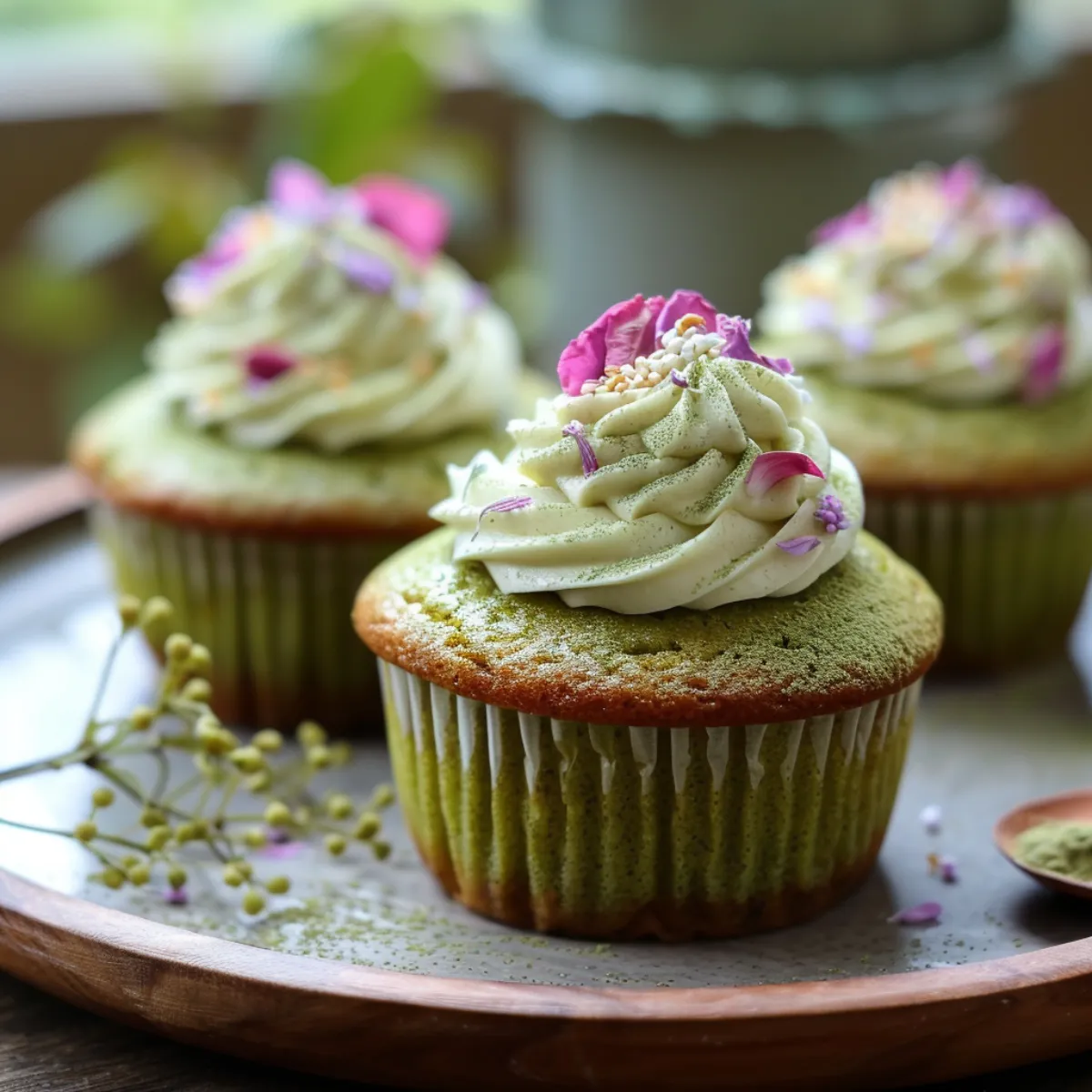
Tools I Use:
- Piping bag with star and round tips
- Offset spatula for smooth swirls
- Sifter for a final dusting of matcha or powdered sugar
Here are my favorite piping styles:
- Rosette Swirl: Using a star tip, start in the center and spiral outward. Classic and elegant.
- Tall Peak: Use a round tip for a tall swirl. Great for rich frostings like cream cheese.
- Flat Top with Sprinkles: Spread with a spatula, then top with crushed pistachios or coconut flakes.
Don’t forget those final touches. I love placing a single edible flower or a sprinkle of black sesame seeds on each one. A diagonal dusting of matcha powder gives it that café-style finish.
One of the best batches I ever made was for a friend’s tea ceremony-themed birthday. I topped each cupcake with a mini white chocolate matcha leaf (just melted, piped, and chilled)—and they were a hit!
Matcha Cupcake Themes for Events and Occasions
Because of their naturally elegant look and subtle sweetness, matcha cupcakes fit a wide range of occasions. I’ve used them for birthdays, brunches, and even as wedding favors.
Here are some fun themes and styling ideas:
| Occasion | Styling Ideas |
|---|---|
| Baby Shower | Green and cream frosting swirls, topped with pearl sprinkles |
| Afternoon Tea | Mini cupcakes with delicate piping, served on floral china |
| Weddings | Gold dust or edible flower petals for a refined finish |
| Holidays | Pair with cranberry frosting or peppermint white chocolate |
| Spring Events | Pastel green tones with lavender or lemon accents |
I once made a spring garden-themed batch where I topped each cupcake with a sugared edible violet and a drizzle of honey glaze. The combo of flavors and aesthetics was unforgettable—and surprisingly simple.
Storing, Serving, and Pairing Matcha-Cupcakes
Best Practices for Freshness and Storage
After pouring your heart into baking a batch of matcha cupcakes, the last thing you want is for them to dry out or lose flavor. Trust me, I’ve learned this the hard way—leaving frosted cupcakes uncovered overnight can be a disaster.
Here’s what I recommend:
- Unfrosted cupcakes: Store in an airtight container at room temperature for up to 2 days. You can also freeze them for up to a month—just wrap individually and thaw before frosting.
- Frosted cupcakes: Keep in the refrigerator in a cupcake carrier or covered tray. Allow them to come to room temperature before serving to restore the soft texture.
Tip: If using a cream cheese frosting, refrigeration is essential, especially in warm climates. Just be sure to cover them well to prevent any “fridge smell” from creeping in.
I like to bake the base a day ahead, store them wrapped overnight, and frost them fresh in the morning. This splits up the workload and guarantees better texture.
Beverages and Snacks That Pair Well with Matcha-Cupcakes
Matcha cupcakes shine on their own, but pairing them with the right drink or snack elevates the whole experience. The earthy flavor of matcha works beautifully with both bold and delicate profiles.
Here are some pairings I’ve tested and loved:
| Pairing | Why It Works |
|---|---|
| Jasmine or Earl Grey tea | Floral notes balance matcha’s depth |
| Iced oat milk latte | Creamy, mellow flavor contrasts the cupcake’s edge |
| Lemon-infused water | Bright acidity cuts through richness |
| Almond biscotti | Crunchy, nutty bite complements soft cupcake |
| White chocolate bark | Sweet and creamy match for matcha’s bitterness |
One memorable combo I served at a brunch was matcha cupcakes with lavender earl grey tea—the floral citrus notes played so nicely with the earthy cupcake base, people asked for seconds before the kettle was done boiling again.
Explore creative, colorful toppings like in our Oreo Mochi Dessert—an easy way to add texture and flair.
Common Questions About Baking with Matcha (FAQ)
How does matcha affect baking?
Matcha adds more than just color to your cupcakes—it changes the flavor profile entirely. In matcha cupcakes, the powder introduces a naturally earthy, slightly bitter note that contrasts beautifully with sweetness. It also imparts a subtle depth and umami flavor you won’t get from typical vanilla or chocolate bases.
From a technical standpoint, matcha doesn’t affect rising or binding. However, because it’s a fine powder, it can clump easily if not sifted. Always sift your matcha before mixing it into batter for a smooth, even green texture.
Can I add matcha to a cake mix?
Absolutely—you can take any basic cake mix and transform it into a quick version of matcha cupcakes by adding about 1 tablespoon of sifted culinary-grade matcha per box of mix. I recommend starting with a vanilla or white cake base so the matcha flavor shines through. Be sure to reduce the flour slightly if you’re using a scratch recipe, or increase the liquid just a bit to balance the powder.
What is a matcha cupcake?
A matcha cupcake is a soft, single-serve cake made with matcha green tea powder. It’s the perfect combination of traditional baking and Japanese tea culture. These cupcakes are known for their striking green hue, earthy-sweet flavor, and their ability to pair with everything from floral frostings to tangy fillings.
In my version, I use high-quality culinary matcha for bold color and flavor, pair it with alcohol-free vanilla, and top it with either cream cheese frosting or a white chocolate glaze—depending on the occasion.
What can you not mix with matcha?
Great question—and one I’ve learned a lot about through kitchen mishaps. Matcha doesn’t play well with overly acidic ingredients like citrus juice or vinegar when used in excess, as they can dull its vibrant green color. It also clashes with very strong flavors like dark chocolate, coffee, or sharp mint unless carefully balanced.
Avoid artificial colors or flavors too—they often overpower matcha’s delicate profile. And never pair matcha with alcohol-based flavorings, as they can create a strange bitterness when baked.
Conclusion
Baking matcha cupcakes has been more than just a creative kitchen adventure for me—it’s become a way to blend culture, wellness, and flavor into one bite-sized treat. From my first taste in Japan to experimenting with frostings in my own home, I’ve learned that matcha offers something truly special: a balance of depth, health, and beauty.
Whether you’re a curious home baker or a green tea devotee, I hope this guide helped you understand the ins and outs of matcha baking. With the right ingredients, a bit of mindfulness, and a dash of inspiration, your cupcakes can be as stunning as they are delicious.
📌 Explore more vibrant green tea dessert ideas on our Pinterest boards—perfect for your next sweet creation! and 👉 Follow our baking journey and get behind-the-scenes tips on our Facebook page!
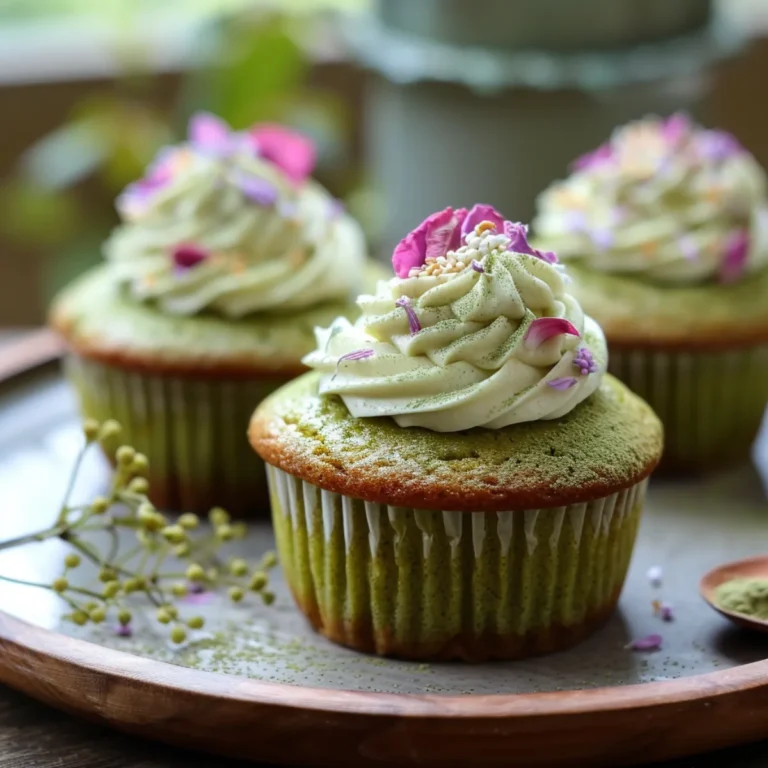
Matcha Cupcakes – A Sweet, Earthy Twist to Classic Treats
Delicious, earthy matcha cupcakes with a beautiful green hue and a subtle, slightly sweet flavor—perfect for any occasion.
- Total Time: 30 minutes
- Yield: 12 cupcakes
Ingredients
- 1 cup all-purpose flour
- 1 tbsp culinary-grade matcha powder (sifted)
- 1 tsp baking powder
- ¼ tsp baking soda
- ¼ tsp salt
- ½ cup granulated sugar
- ¼ cup coconut sugar (or brown sugar)
- ⅓ cup neutral oil (canola or refined coconut oil)
- 2 large eggs (or flax eggs for vegan option)
- ½ cup oat milk (or almond milk)
- 1 tsp alcohol-free vanilla extract
- 1 tsp lemon juice or vinegar
Instructions
- Preheat oven to 325°F (160°C). Line a 12-cup muffin tin with paper liners.
- In a medium bowl, whisk together flour, matcha, baking powder, baking soda, and salt.
- In a separate large bowl, whisk together sugar, oil, eggs, milk, vanilla, and lemon juice.
- Gradually add the dry ingredients into the wet, mixing gently until just combined.
- Divide batter evenly into liners, filling each about ¾ full.
- Bake for 18–20 minutes, or until a toothpick inserted in the center comes out clean.
- Cool in the pan for 5 minutes, then transfer to a wire rack to cool completely.
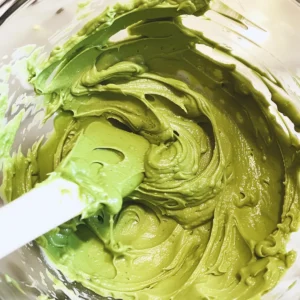
Notes
Sift the matcha for a smooth, even color. Use room temperature ingredients for better texture.
- Prep Time: 10 minutes
- Cook Time: 20 minutes
- Category: Dessert
- Method: Baking
- Cuisine: Japanese
- Diet: Vegetarian
Nutrition
- Serving Size: 1 cupcake
- Calories: 150
- Sugar: 12g
- Sodium: 95mg
- Fat: 7g
- Saturated Fat: 3g
- Unsaturated Fat: 4g
- Trans Fat: 0g
- Carbohydrates: 18g
- Fiber: 1g
- Protein: 3g
- Cholesterol: 30mg
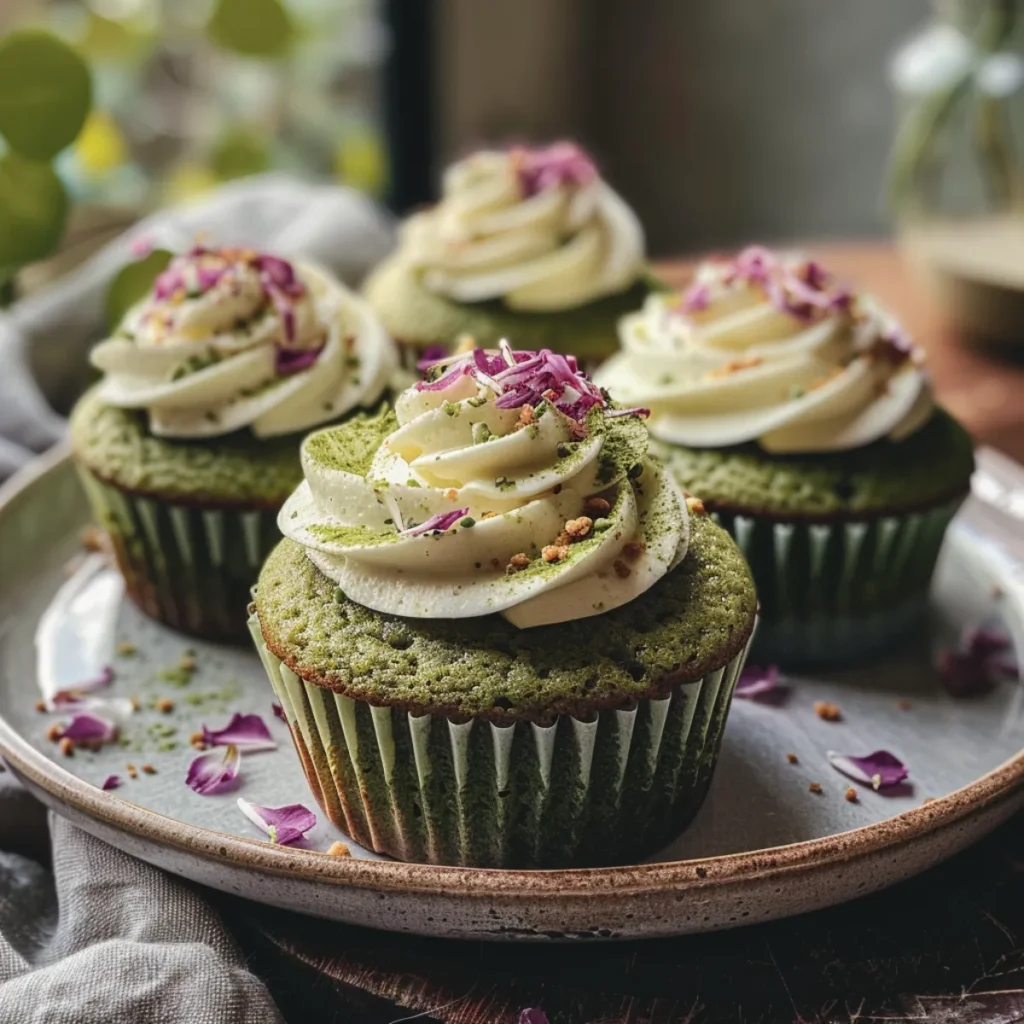
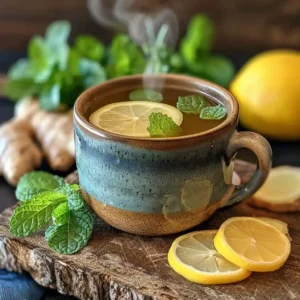
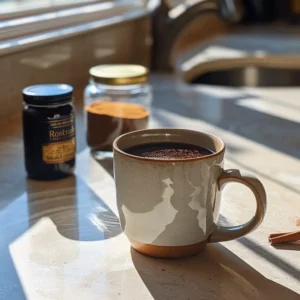





5 thoughts on “Matcha Cupcakes – A Sweet, Earthy Twist to Classic Treats”